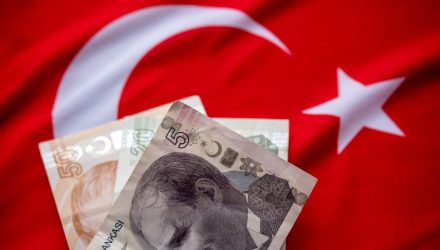By Natalia Gurushina, Chief Economist, Emerging Markets Fixed Income Strategy, VanEck
Central banks in Turkey, South Africa and Brazil delivered hawkish messages. The currencies’ reaction shows that the ones in Turkey and South Africa were more credible.
The Turkish central bank kept its policy rate on hold at 17%, as expected. The next batch of inflation prints on February 3 will show whether the pause was justified, but Governor Naci Agbal’s comments – “tight for longer”, “further tightening if necessary” – were hawkish enough to reassure the market and give the lira a boost in the morning trade. Our main concern is that the central bank’s policy space and direction are ultimately determined by President Tayyip Erdogan – and he made it very clear just days ago that he does not like high interest rates. Further, even though the real policy rate is positive if adjusted by headline inflation, alternative inflation measures are above 30%. This means that further hikes might be required to reverse dollarization and encourage inflows to the lira bank accounts.
Brazil’s central bank made a hawkish turn yesterday, dropping its forward guidance and making the market more excited about a prospect of early rate hikes. The swap curve prices in the first one already in March (and a total of 380bps in the next 12 months) – even though the statement mentioned the transitory nature of inflation pressures, a high degree of uncertainty, and the need to keep monetary conditions accommodative. The real’s rally was short-lived, as the market quickly refocused on Brazil’s fiscal issues and the COVID’s second wave complications.
South Africa’s macroeconomic problems abound, but the central bank (SARB) is definitely not one of them. The SARB delivered another credible message today, keeping the policy rate on hold, but raising its inflation forecast and plugging in two 25bps rate hikes into its quarterly projection model (in Q2 and Q3). Governor Lesetja Kganyago talked about the usual qualifiers (such as the balance of risks and uncertainties), but a more hawkish bias would be consistent with the expected uptick in inflation and some recovery in economic activity in 2021. The local curve flattened (short rates up, longer rates down), and the rand strengthened a bit in response to the SARB’s message.
Originally published by VanEck, 1/21/21
IMPORTANT DEFINITIONS & DISCLOSURES
PMI – Purchasing Managers’ Index: economic indicators derived from monthly surveys of private sector companies; ISM – Institute for Supply Management PMI: ISM releases an index based on more than 400 purchasing and supply managers surveys; both in the manufacturing and non-manufacturing industries; CPI – Consumer Price Index: an index of the variation in prices paid by typical consumers for retail goods and other items; PPI – Producer Price Index: a family of indexes that measures the average change in selling prices received by domestic producers of goods and services over time; PCE inflation – Personal Consumption Expenditures Price Index: one measure of U.S. inflation, tracking the change in prices of goods and services purchased by consumers throughout the economy; MSCI – Morgan Stanley Capital International: an American provider of equity, fixed income, hedge fund stock market indexes, and equity portfolio analysis tools; VIX – CBOE Volatility Index: an index created by the Chicago Board Options Exchange (CBOE), which shows the market’s expectation of 30-day volatility. It is constructed using the implied volatilities on S&P 500 index options.; GBI-EM – JP Morgan’s Government Bond Index – Emerging Markets: comprehensive emerging market debt benchmarks that track local currency bonds issued by Emerging market governments.; EMBI – JP Morgan’s Emerging Market Bond Index: JP Morgan’s index of dollar-denominated sovereign bonds issued by a selection of emerging market countries; EMBIG – JP Morgan’s Emerging Market Bond Index Global: tracks total returns for traded external debt instruments in emerging markets.
The information presented does not involve the rendering of personalized investment, financial, legal, or tax advice. This is not an offer to buy or sell, or a solicitation of any offer to buy or sell any of the securities mentioned herein. Certain statements contained herein may constitute projections, forecasts and other forward looking statements, which do not reflect actual results. Certain information may be provided by third-party sources and, although believed to be reliable, it has not been independently verified and its accuracy or completeness cannot be guaranteed. Any opinions, projections, forecasts, and forward-looking statements presented herein are valid as the date of this communication and are subject to change.
Investing in international markets carries risks such as currency fluctuation, regulatory risks, economic and political instability. Emerging markets involve heightened risks related to the same factors as well as increased volatility, lower trading volume, and less liquidity. Emerging markets can have greater custodial and operational risks, and less developed legal and accounting systems than developed markets.
All investing is subject to risk, including the possible loss of the money you invest. As with any investment strategy, there is no guarantee that investment objectives will be met and investors may lose money. Diversification does not ensure a profit or protect against a loss in a declining market. Past performance is no guarantee of future performance.







